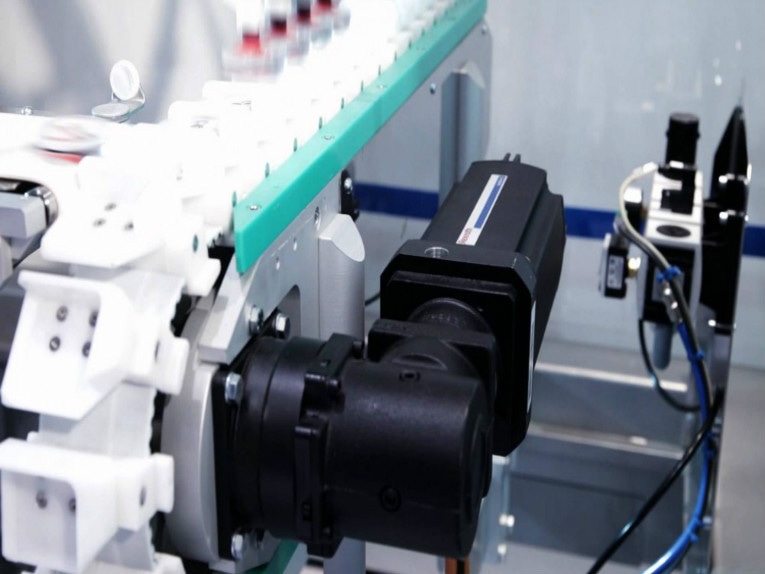Piezo actuators, Voice coil actuators, Linear motor stages.
When we talk about linear motion, we typically discuss applications where the travel distance is at least a few hundred millimeters, and the required positioning is in the range of a few tenths of a millimeter. And for these requirements, guides and drives with recirculating bearings are a good fit. Case in point: the lead deviation for a common class 5 ball screw is 26 microns per 300 mm of travel. But when the application calls for positioning in the nanometer range—one-billionth of a meter—engineers have to look beyond mechanical rolling and recirculating elements in order to achieve the required resolution.
The three most common linear motion solutions for nanopositioning are piezo actuators, voice coil actuators, and linear motor stages. The drive mechanism in each of these solutions is completely free of mechanical rolling or sliding elements, and they can be paired with air bearings for high positioning accuracy and resolution.
Piezo actuators
Piezo actuators (also referred to as piezo motors) take advantage of the reverse piezoelectric effect to produce motion and force. There are many styles of piezo actuators, but two common ones for nanopositioning are linear stepper and linear ultrasonic. Linear stepper piezo motors use several piezo elements mounted in a row that act as pairs of “legs.” When an electrical charge is applied, one pair of legs grips a longitudinal rod via friction and moves it forward as the legs extend and bend. When this pair of legs releases, the next pair takes over. By running at extremely high frequencies, linear stepper piezo motors produce continuous linear motion with strokes up to 150 mm and with picometer-level resolution.
Linear ultrasonic piezo motors are based on a piezoelectric plate. When an electrical charge is applied to the plate, it becomes excited at its resonance frequency, causing it to oscillate. These oscillations produce ultrasonic waves in the plate. A coupling (or pusher) is attached to the plate and preloaded against a longitudinal rod (also called a runner). The ultrasonic waves cause the plate to expand and contract in an elliptical manner, enabling the coupling to advance the rod forward and produce linear motion. Linear ultrasonic piezo motors can achieve resolution of 50 to 80 nm, with maximum travel similar to linear stepper motors, at 100 to 150 mm.
Voice coil actuators
Another solution for nanopositioning applications are voice coil actuators. Similarly to linear motors, voice coil actuators use a permanent magnet field and a coil winding. When current is applied to the coil, a force is generated (known as the Lorentz force). The magnitude of the force is determined by the product of the current and the magnetic flux.
This force causes the moving part (which can be either the magnet or the coil) to travel, with guidance provided by either air bearings or crossed roller slides. Voice coil actuators can achieve resolution down to 10 nm, with strokes typically up to 30 mm, although some are available with strokes up to 100 mm.
Linear motor stages
When nanometer resolution is required over longer strokes, linear motor stages with air bearings are typically the best choice. While piezo and voice coil actuators have limited travel capabilities, linear motors can be designed for travel up to several meters. The use of air bearings as the guide system makes a linear motor stage completely non-contact, with no mechanical transmission elements or friction to affect the motion and positioning accuracy. In fact, linear motor stages with air bearings can achieve single-nanometer resolution.
The downside of linear motor stages for nanopositioning applications is their footprint, which is much larger than that of piezo or voice coil actuators. While they can be challenging to integrate into small devices, they are a good fit for applications that require a relatively long stroke and high resolution, such as medical imaging.
Post time: Jun-15-2020








